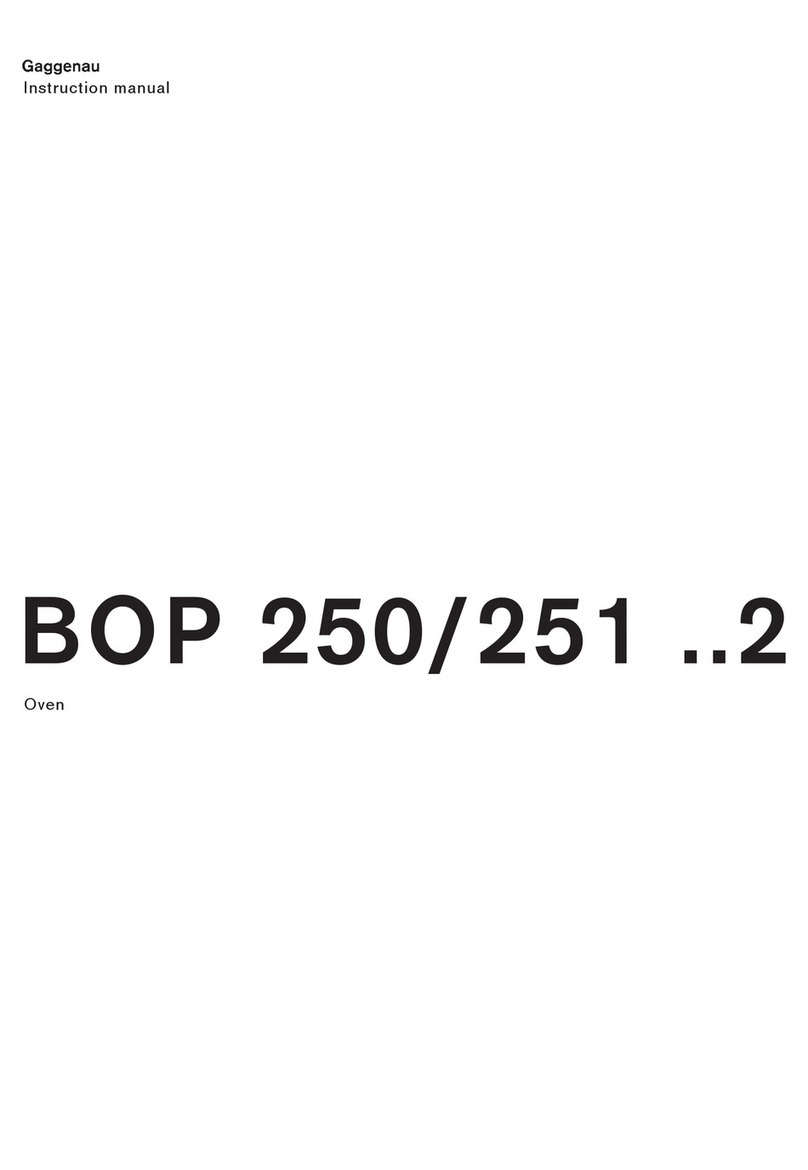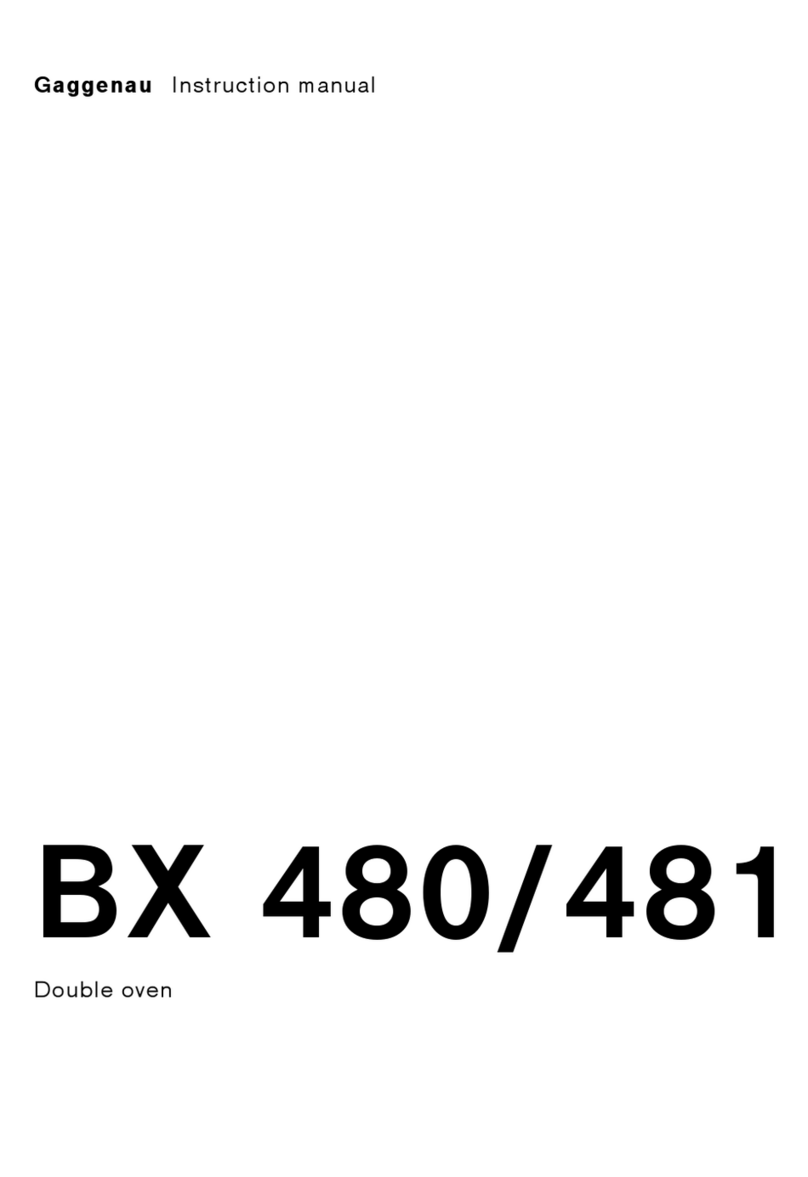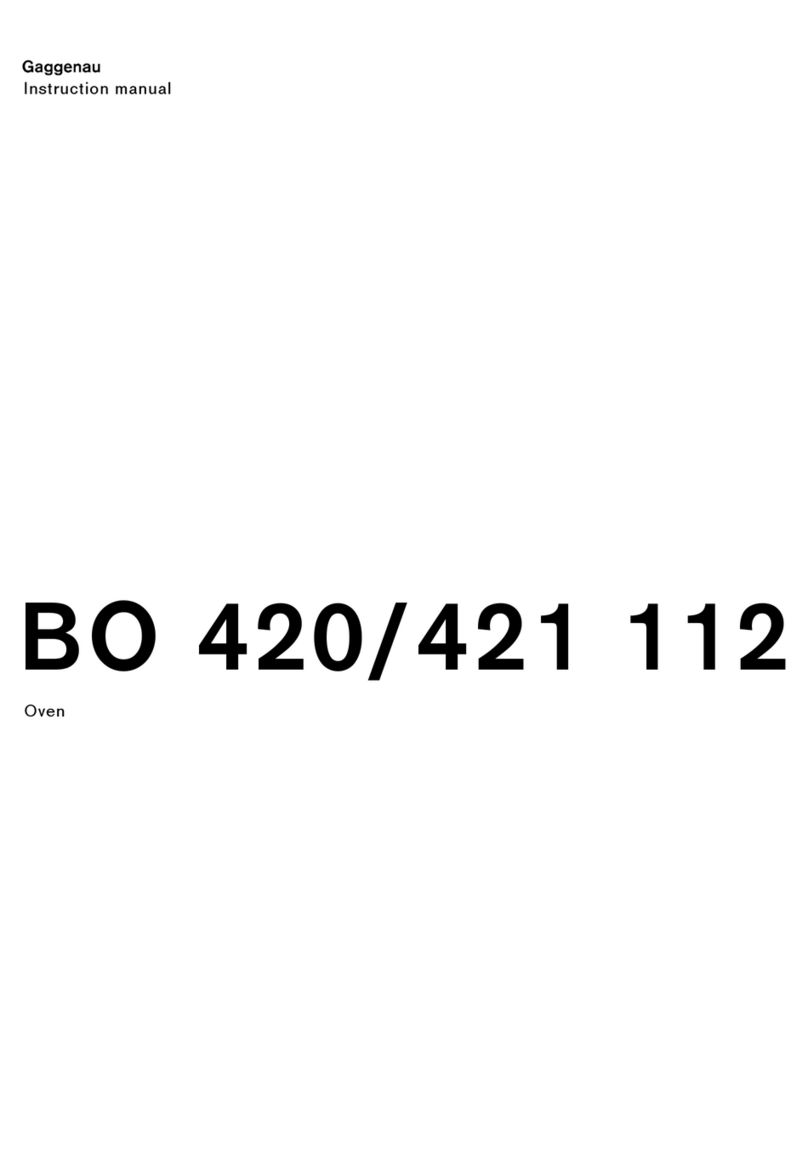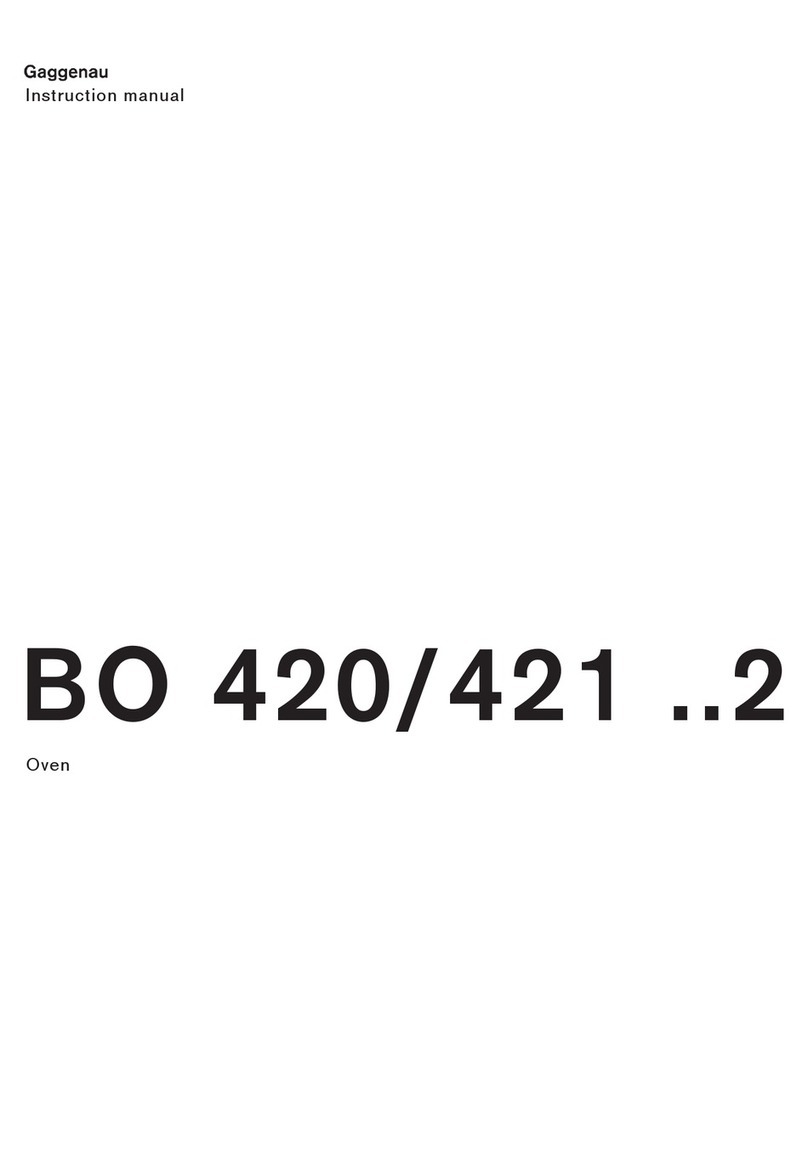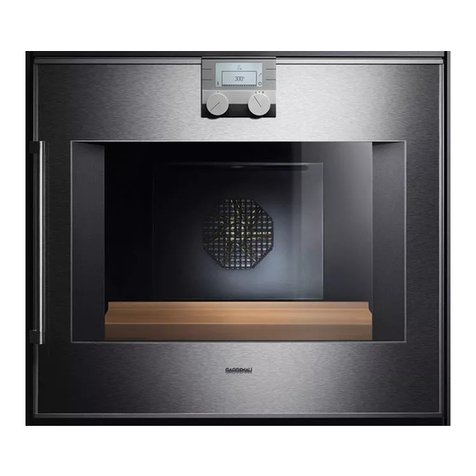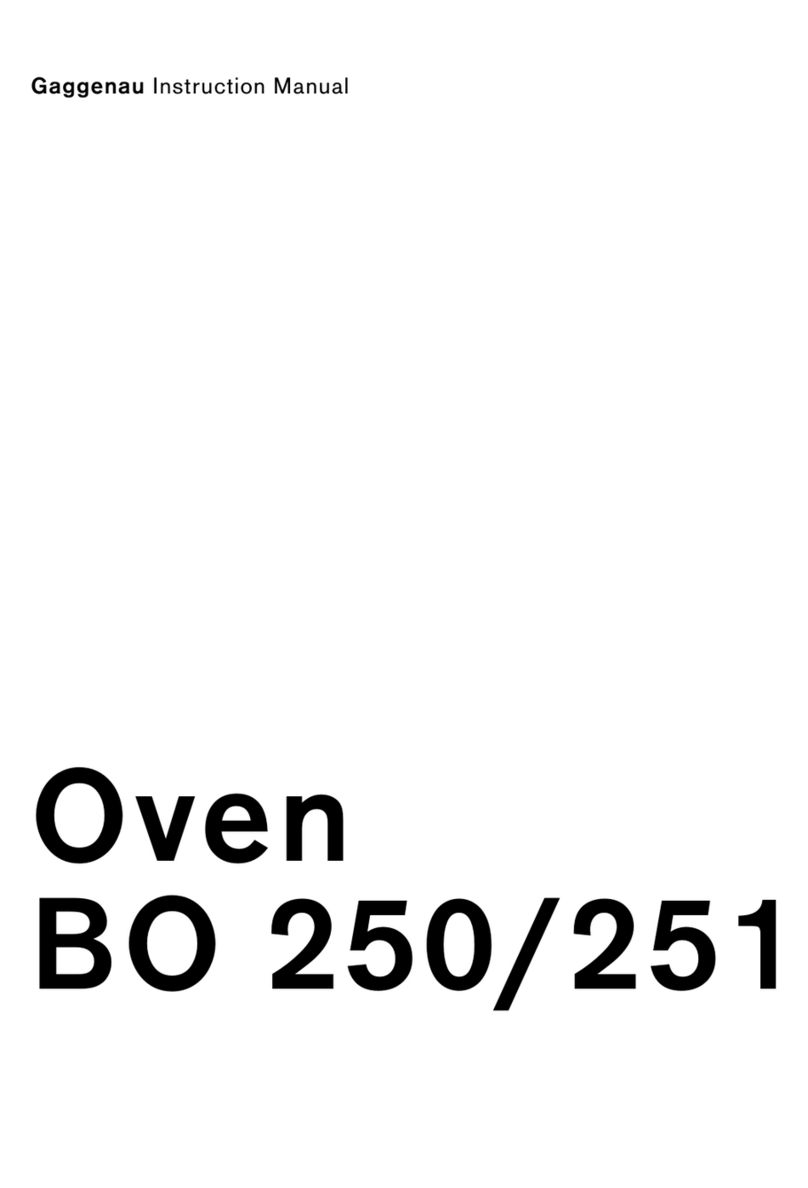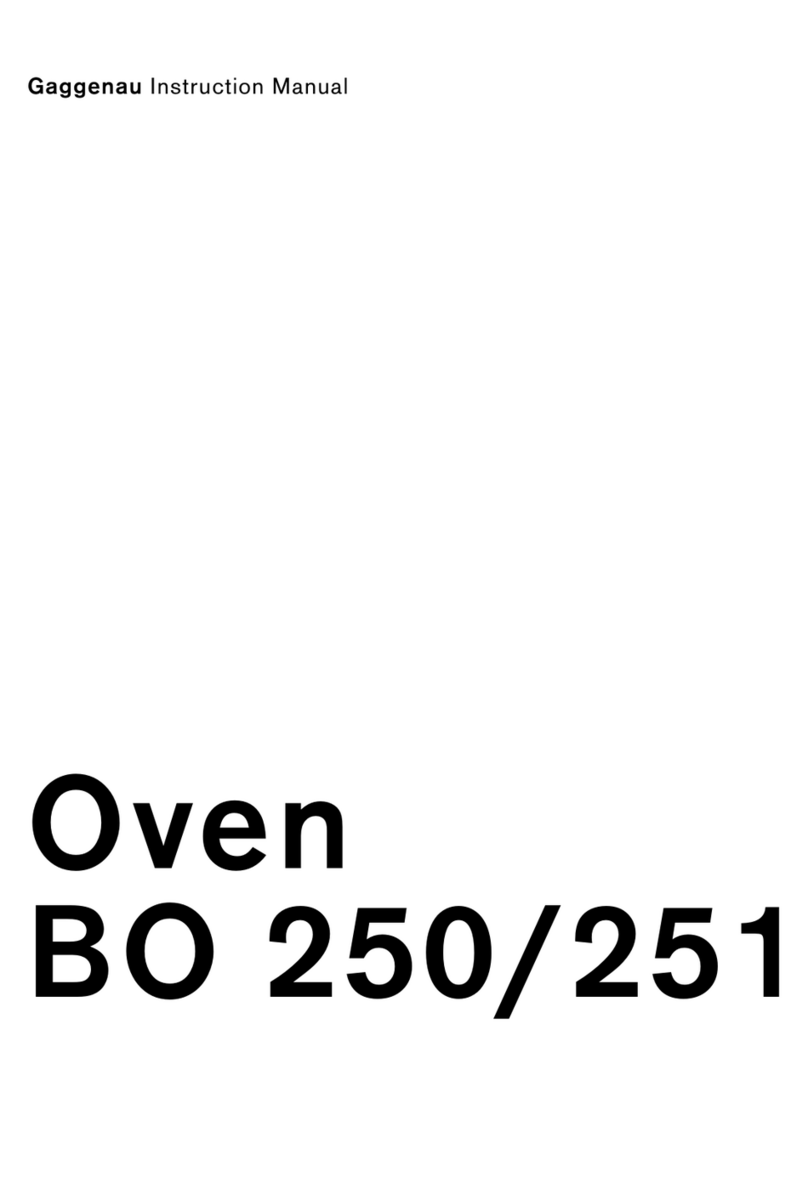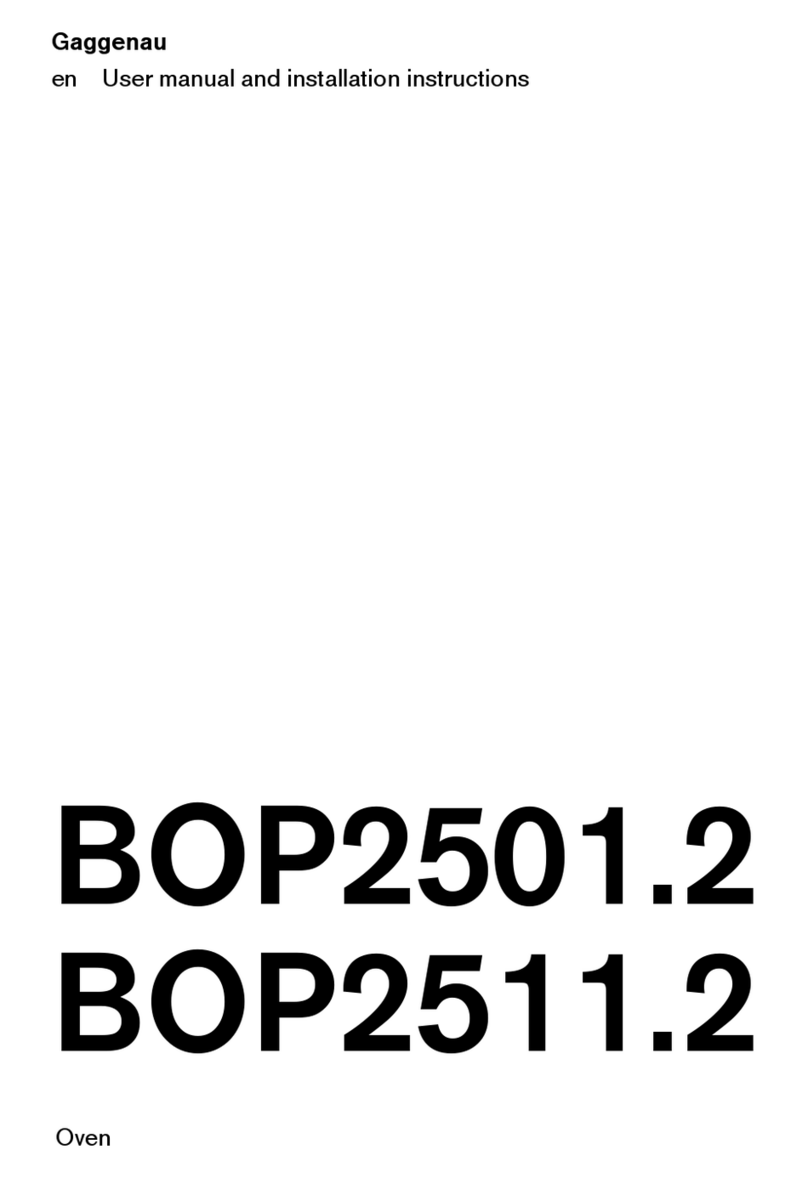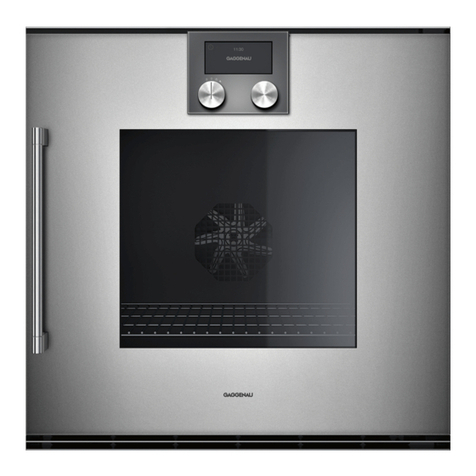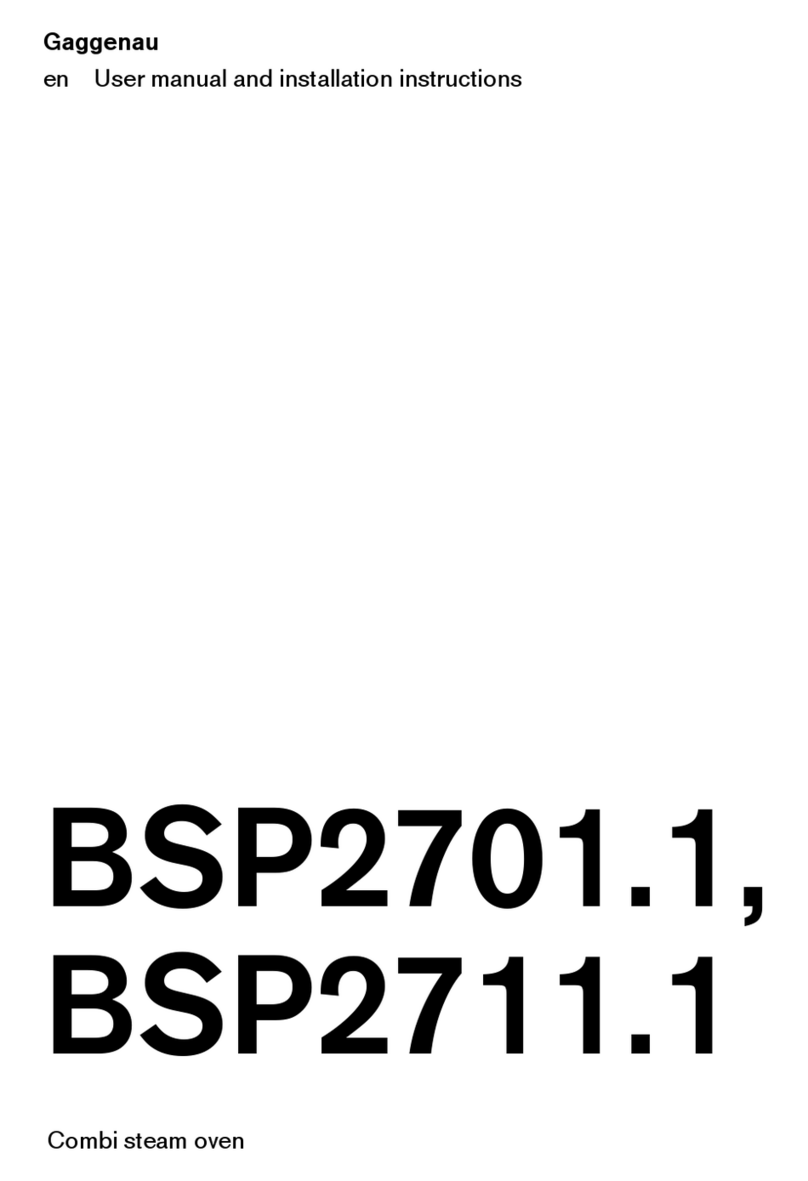
en Preventing material damage
4
The descaling solution may cause chemical
burns in the mouth, throat and eyes or on the
skin.
▶Avoid the skin coming into contact with the
descaling solution.
▶Keep children away from the descaling
solution.
▶Do not drink the descaling solution.
▶The descaling solution must not come into
contact with food.
▶Clean the water tank in the dishwasher or
thoroughly by hand before you next use the
appliance.
2 Preventing material damage
2.1 General
ATTENTION!
A build-up of heat may damage the appliance.
▶Do not place anything directly on the cooking com-
partment floor.
▶Do not line the cooking compartment floor with alu-
minium foil.
▶Always place cookware in a perforated cooking con-
tainer or on a wire rack.
Chlorinated tap water (>40mg/l) may damage the ap-
pliance.
▶Use low-chloride non-carbonated mineral water.
▶You can obtain information about your tap water
from your water supplier.
Chloride and acids may damage the stainless steel sur-
face.
▶Remove any residues of salt, hot sauces, e.g.
ketchup or mustard, salted food, e.g. salted roasts,
or other foods containing chloride or acid immedi-
ately.
Aluminium foil can cause permanent discolouration on
the door pane.
▶Ensure that the aluminium foil does not come into
contact with the door pane.
Fruit juice can cause permanent stains in the cooking
compartment.
▶Always remove fruit juice immediately.
▶Wipe with a damp cloth, followed by a dry cloth.
The prolonged presence of moisture in the cooking
compartment leads to corrosion.
▶Do not keep moist food in the cooking compartment
for a long time with the door closed.
▶Do not store food in the cooking compartment.
Rusting material may lead to corrosion in the cooking
compartment.
▶Only use original accessories in the cooking com-
partment.
▶Do not use any enamelled baking trays or grill trays.
▶Never use serving plates or cutlery that may rust.
Small parts that are not original may damage the appli-
ance.
▶Only use original small parts, e.g. knurled nuts.
▶If necessary, order small parts from our spare parts
service.
Heat can damage stainless steel cooking containers.
▶Only heat stainless steel cooking containers up to
230°C.
▶Do not use stainless steel cooking containers in the
oven.
Leaving the appliance to cool down with the door open
will damage the front of adjacent units over time.
▶Always allow the cooking compartment to cool
down with the door closed after cooking at high
temperatures.
▶Take care not to trap anything in the appliance
door.
If the seal is very dirty, the appliance door will no
longer close properly during operation. This may dam-
age the front of adjacent kitchen units.
▶Keep the seal clean at all times.
▶Never operate the appliance if the seal is damaged
or missing.
Sitting or placing objects on the appliance door may
damage it.
▶Do not place, hang or support objects on the appli-
ance door.
▶Do not place cookware or accessories on the appli-
ance door.
Carrying the appliance by the door handle could break
it. The door handle cannot support the weight of the
appliance.
▶Do not carry or hold the appliance by the door
handle.
2.2 Steam
ATTENTION!
Dripping liquids may damage the cooking compart-
ment.
▶To catch any dripping liquids, when steaming using
a perforated cooking container, always insert the un-
perforated cooking container underneath.
Silicone bakeware is not suitable for combined opera-
tion with steam.
▶Cookware must be heat- and steam-resistant.
Using cookware with rust spots may cause corrosion in
the cooking compartment. Even the smallest spots of
rust can cause corrosion.
▶Do not use cookware with rust spots.
Hot water in the water tank may damage the steam
system.
▶Only fill the water tank with cold water.
If descaling solution comes into contact with the control
panel or other delicate surfaces, it will damage them.
▶Remove descaling solution immediately with water.
2.3 Cleaning
ATTENTION!
Limescale may damage the appliance.
▶Descale the appliance regularly.

